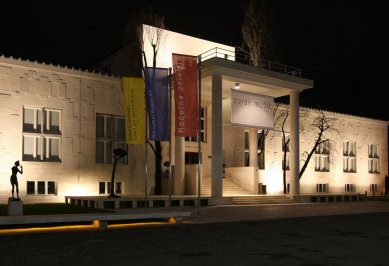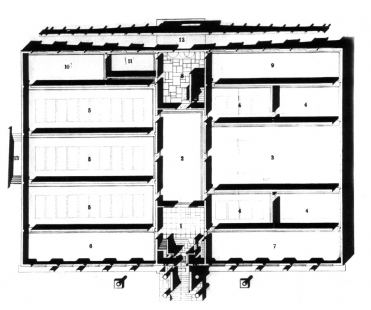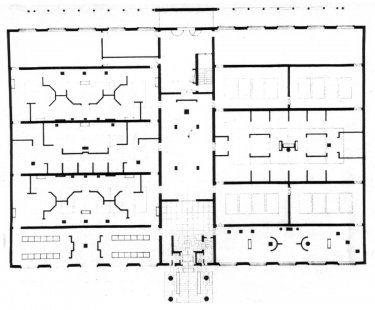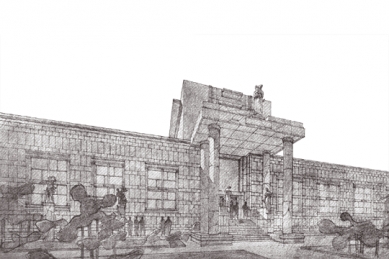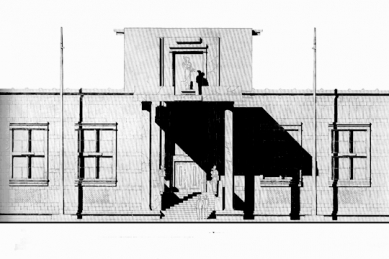
Ljubljana Museum of Modern Art
Moderna galerija Ljubljana

The Ljubljana Museum of Modern Art, one of the venues of the Ljubljana International Biennial of Graphic Arts, houses a permanent collection of paintings, sculptures and prints by 20th century artists from Slovenia and abroad.
The Ljubljana Museum of Modern Art, constructed between 1940 and 1951, is considered to be the architect Edvard Ravnikar's first significant work in Ljubljana. Some of the building's features reflect influence from Ravnikar 's great teacher, Jože Plečnik, particularly his National and University Library (Narodna in univerzitetna knjižnica), in the construction of which Ravnikar assisted as a building supervisor. Plečnik's influence is particularly evident in the protruding stone blocks on the Museum's façade, little decorative columns in the middle of windows and artificial-stone edgings around them. Despite the influences from Plečnik's creations, in which classical elements were usually emphasized, the Museum of Modern Art was designed as a strikingly modern building, particularly as far as its floor plans and well-considered interior lighting are concerned.
The Ljubljana Museum of Modern Art houses a number of rich collections of work by 20th century Slovenian artists. It is one of the key venues for the Ljubljana International Biennial of Graphic Arts. Along with Fran Berneker's monument to Primož Trubar (1508-1586), the father of the written Slovenian language, it enhances the entrance to the Tivoli park, the locals' favoured walking area.
The Ljubljana Museum of Modern Art, constructed between 1940 and 1951, is considered to be the architect Edvard Ravnikar's first significant work in Ljubljana. Some of the building's features reflect influence from Ravnikar 's great teacher, Jože Plečnik, particularly his National and University Library (Narodna in univerzitetna knjižnica), in the construction of which Ravnikar assisted as a building supervisor. Plečnik's influence is particularly evident in the protruding stone blocks on the Museum's façade, little decorative columns in the middle of windows and artificial-stone edgings around them. Despite the influences from Plečnik's creations, in which classical elements were usually emphasized, the Museum of Modern Art was designed as a strikingly modern building, particularly as far as its floor plans and well-considered interior lighting are concerned.
The Ljubljana Museum of Modern Art houses a number of rich collections of work by 20th century Slovenian artists. It is one of the key venues for the Ljubljana International Biennial of Graphic Arts. Along with Fran Berneker's monument to Primož Trubar (1508-1586), the father of the written Slovenian language, it enhances the entrance to the Tivoli park, the locals' favoured walking area.
0 comments
add comment

